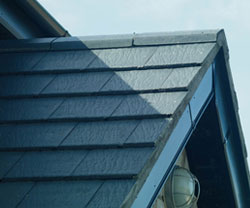Loft Ventilation Pipes
Without proper ventilation, a loft can get extremely hot. This is more than simply an inconvenience because it can lead to:
- Mold growth
- Warped structural elements
- Increased utility bills
Since excess heat can cause moisture to accumulate, mold has the perfect environment to start growing. Not only can the excess heat put stress on the structural elements of a loft, but research has found that an unventilated loft will reduce a roof’s lifespan. And since this heat can cause the temperature throughout the rest of a home to rise, it can easily result in higher utility bills. Because these are all problems that homeowners would prefer not to have to face, the good news is proper ventilation can eliminate them.
How Do You Ventilate a Loft?
The end result of loft ventilation is allowing fresh air to freely flow into this space and old air to be pulled out. Because ventilation gives old air that heats up a place to go, it won’t cause the types of problems that it would in an unventilated space. In order to create this flow, two types of loft ventilation pipes, which are also referred to as vents, need to be added to this space. The types of pipes that need to be added are intake and exhaust vents. The intakes will allow fresh air to enter the loft, while the exhaust will provide existing air with a way to get out.
What Type of Exhaust Vent Should Be Used for Loft Ventilation?
A standard ridge vent is the most popular option for homeowners who want to ventilate their lofts. While this type of exhaust is very effective, its design means that it will be hidden from sight. Instead of taking away from the appearance of your home’s exterior, it will be hidden behind your roof’s shingles. Another benefit of this type of exhaust vent is that it’s very easy to install. All it takes are three steps to successfully install a ridge vent. Once this vent is in place, you won’t have to worry about it ever rusting or cracking. Additionally, it will ensure that rain and insects stay out of your loft space.
Intake Options for Ventilating a Loft
The two most common ways to add the intake component of a loft ventilation system are fascia or soffit vents. If you opt for fascia vents, you will be able to ventilate up to 100 feet with just a single roll. Thanks to its smart design, all you’ll need to do to install this type of intake ventilation is nail it in place. Soffit vents are the other way to pull fresh air into your loft space. One reason many homeowners like this intake method is because it’s very flexible. Another reason is it’s easy to install on almost all surfaces. As if those benefits weren’t enough, the aluminum used to create these vents is fully resistant to corrosion. You can order soffit vents in brown, white or mill varieties.

Categories
- Home
- Loft Ventilation Products
- Ceiling Loft Ventilation
- Gravity Loft Ventilation
- Lindab Ventilation
- Loft Eaves Ventilation
- Loft Rotary Vents
- Loft Ventilation Fans
- Loft Ventilation Grilles
- Loft Ventilation Pipes
- Loft Ventilation Systems
- Roof Ventilation Tiles
- Small Loft Vents
- Loft Ventilation Companies
- Loft Ventilation Information
- Types Of Loft Ventilation
